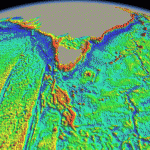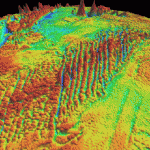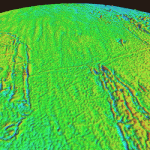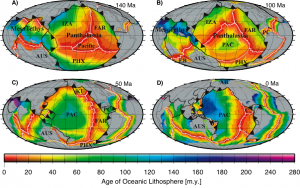Project Summary
Sea level has fluctuated by up to 300 m through geological time, creating vast sedimentary basins and associated natural resources. We will use Earth’s subduction history as imaged by seismic tomography to establish a subduction reference framework for the past 200 million years, tracking all tectonic plates in both latitude and longitude. 4D numerical mantle-plate tectonic simulations (3D plus time) will reconstruct how the recycling of old, cold oceanic plates into the mantle have influenced surface topography and sea-level change since the breakup of the supercontinent Pangaea. … Read more…
Aedon Talsma wins Petroleum Exploration Society of Australia Study Grant and Leo A Cotton Prize
Congratulations to Aedon Talsma who picked up both the Petroleum Exploration Society of Australia Study Grant and the Leo A. Cotton Prize in Exploration Geophysics. Well done Aedon!




